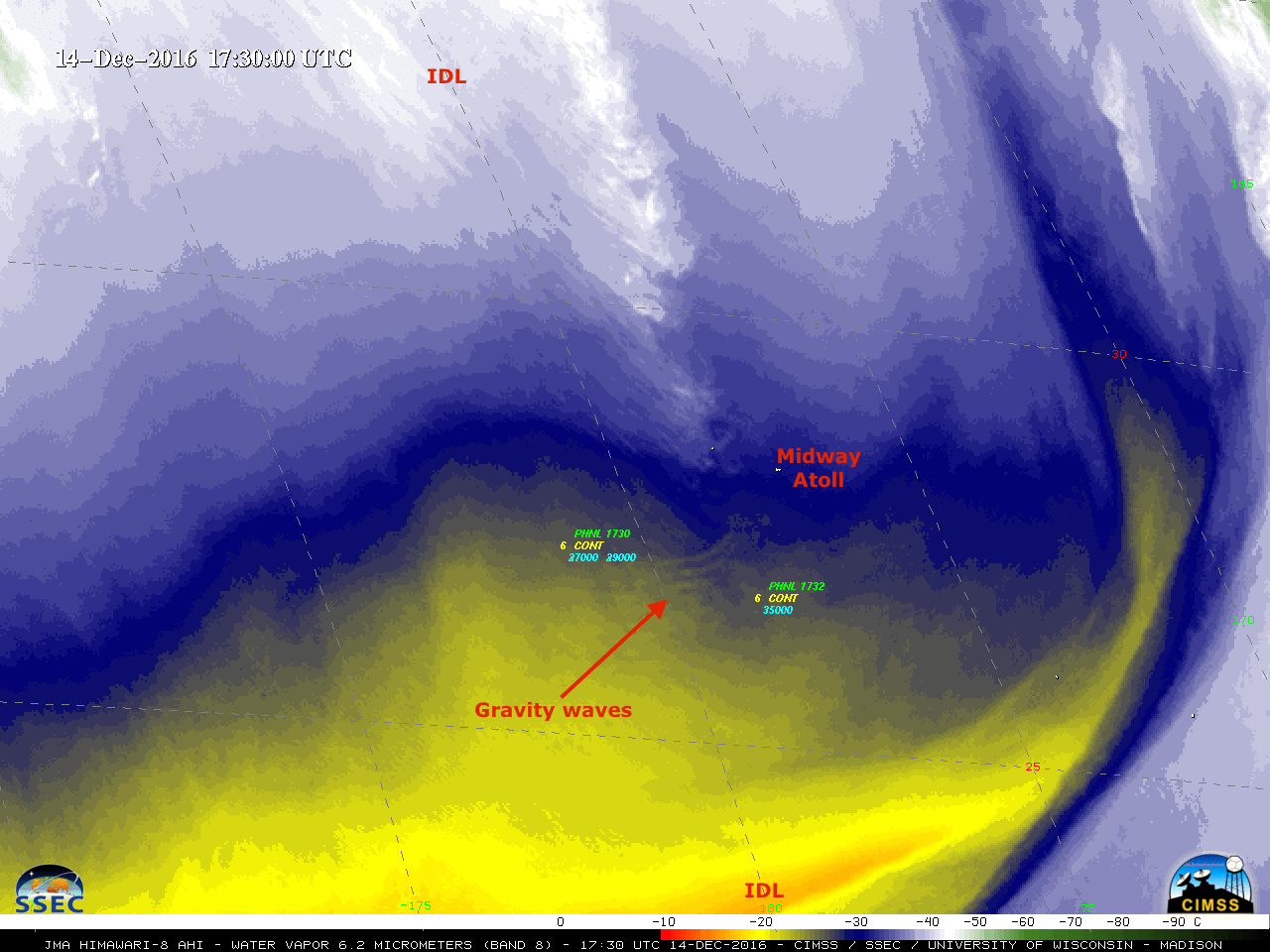
[ Archive ]

 |
CIMSS-NOAA Weekly Report [ Archive ] |
 |
ASPB AND CIMSS WEEKLY HIGHLIGHTS FOR THE WEEK ENDING JANUARY 6, 2017
IN THE PRESS:
ITEMS FOR THE ADMINISTRATOR:
ITEMS FOR THE ASSISTANT ADMINISTRATOR:
ITEMS FOR THE OFFICE DIRECTOR, STAR:
Paper Published and Media Coverage: A paper on hurricane suppression along the U.S. coast was published in Nature on 4 January 2017. Stories appeared in the New York Times, USA Today, Time Magazine, a number of regional newspapers along the U.S. coast, and in multiple newspapers around the world, mostly through a story by the Associated Press and through University of Wisconsin-Madison and NOAA/NCEI press releases. A story also aired on NPR's All Things Considered. The article is Kossin, J. P., 2016: Hurricane intensification along United States coast suppressed during active hurricane periods, Nature, doi:10.1038/nature20783 available at http://www.nature.com/nature/journal/vaop/ncurrent/full/nature20783.html. (J. Kossin, NCEI/CWC, 608-265-5356)
ITEMS FOR THE DIVISION CHIEF, CoRP:
The Storm that Sank the Edmund Fitzgerald: Bob Aune presented an invited lecture on the November 10, 1975 storm that sank the Great Lakes ore carrier, the Edmund Fitzgerald at the weekly meeting of the Christian Men's group at Bethel Lutheran Church in Madison. Forecasting techniques from 1975 using fax maps and the National Weather Service's Limited-area Fine-mesh Model (LFM) were compared to computer-generated animations that are routinely used by today's forecasters. Images from NOAA-4 satellite were available for this case but coverage was not optimal due to the polar orbit. Geostationary satellite data available today give forecasters improved coverage both in time and space making it easier for forecasters to keep ships out of harms way. (R. Aune,ER/A2, 608-262-1071)
CIMSS Satellite Blog Post Improves Turbulence Identification at Honolulu Forecast Office: On 27 December 2016 there was a pilot report of moderate to severe turbulence over the Pacific Ocean. Following a Cooperative Institute for Meteorological Satellite Studies (CIMSS) Satellite Blog post on a previous turbulence case from 14 December 2016 (http://cimss.ssec.wisc.edu/goes/blog/archives/22803), operational meteorologists at the National Weather Service (NWS) Honolulu Forecast Office (HFO) were able to refine the spatial area covered with a Significant Meteorological Information (SIGMET) bulletin based on small-scale gravity waves evident in Himawari-8 water vapor imagery. Based on this service improvement, a NWS HFO forecaster conveyed to management that the CIMSS blog post made "it very straightforward to identify the feature" which led to "a direct (and timely) benefit." The 27 December turbulence event was summarized in a new blog post (http://cimss.ssec.wisc.edu/goes/blog/archives/22884). CIMSS has a particularly close relationship with NWS HFO because the satellite liaison to NWS Pacific Region, Jordan Gerth, is a CIMSS employee stationed in Madison. (J. Gerth, CIMSS, 608-263-4942; S. Bachmeier, CIMSS, 608-263-3958; S. Lindstrom, CIMSS, 608-263-4425; T. Wimmers, CIMSS, 608-263-3294; S. Griffin, CIMSS, 608-262-0986)
 (Click image to enlarge)
(Click image to enlarge)
Figure caption: Himawari-8 Water Vapor (6.2 µm) image from 1730 UTC on 14 December 2014, showing the signature of a gravity wave feature that was responsible for pilot reports of moderate to severe turbulence.
VISITORS:
NEXT WEEK:
LOOKING AHEAD:
| Archived Weeklies Page | Submit a report item |